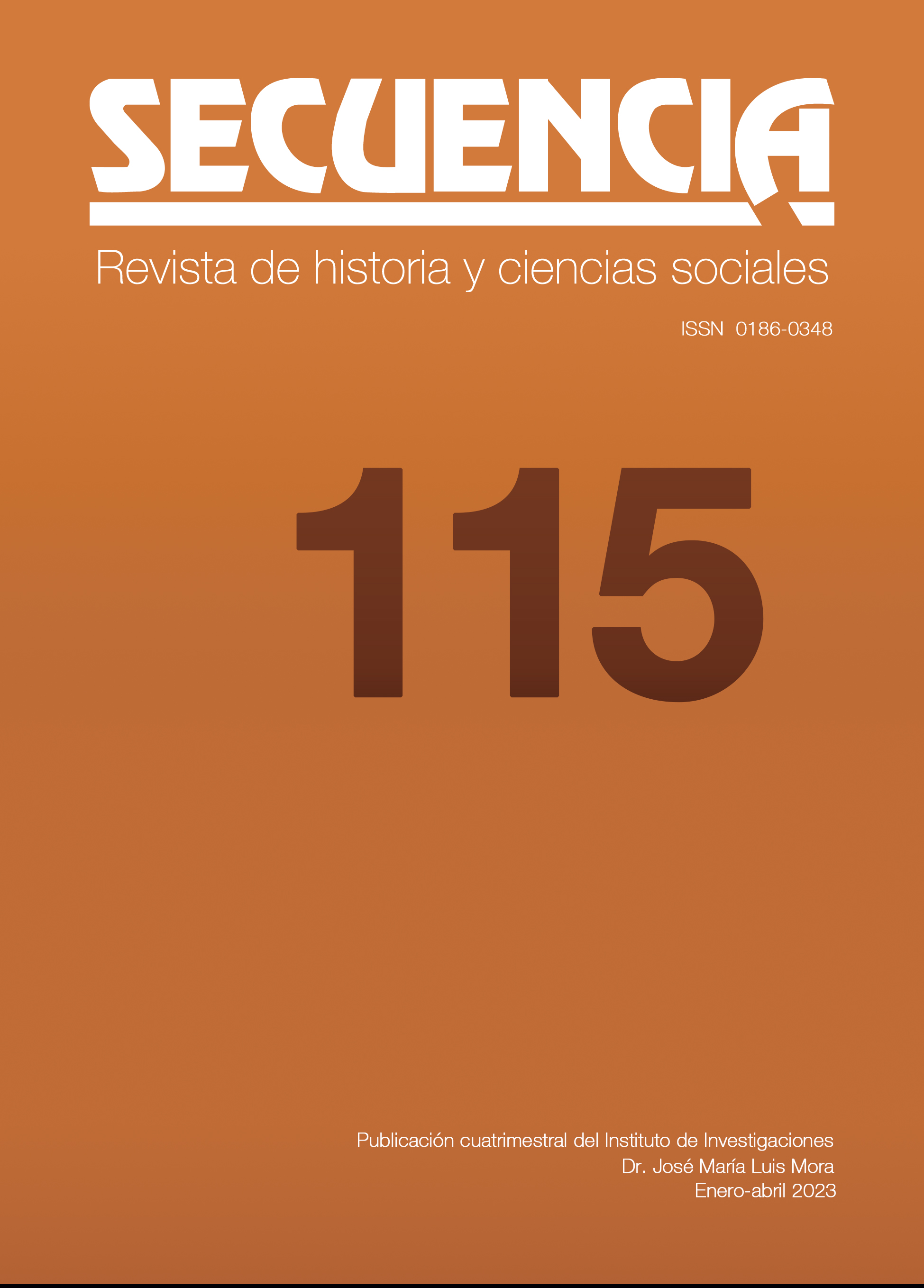Abstract
The growth of the cultural and creative industries has changed the conception of the products of artistic activity, which are becoming important instruments of development in many parts of the world. However, the national industry looks less and less competitive. This paper explores the effects of globalization on the comic book industry in Mexico and presents a vision of its future based on the available empirical evidence and the opinions of different industry stakeholders, on the circumstances, needs and challenges faced by the sector, as well as what should be done to take advantage of the international industry trend. It is concluded that it will be difficult to reverse this process without a change in public policies that will lead to the creation of an environment that will allow to exploit the economic potential.
References
Akmanova, S. V, Kurzaeva, L. V. y Kopylova, N. A. (2019). The models of the media educational concept of developing lifelong selflearning individual readiness. Media Education (Mediaobrazovanie), 59(1), 3-13.
Avilés-Ochoa, E. y Canizalez-Ramírez, P.M. (2015). Industrias culturales y crecimiento económico. Un modelo para el estudio del surgimiento de clusters creativos. Economía, Sociedad y Territorio, 15(47), 185-216. https://doi.org/10.22136/est002015558
Bravo, J. (25 de marzo 2021). Otra de Monreal: 15% de cuota de catálogo en Netflix. Proceso (opinión). Recuperado de: https://www.proceso.com.mx/opinion/2021/3/25/otra-de-monreal-15-de-cuota-de-catalogo-en-netflix-260768.html
Bolaños, V. H. (1983). Impacto de la Revista, la Gran Prensa y la Historieta en la Conciencia Social. Ciudad de México: Editorial Ciencia, Cultura y Educación.
Brandellero, A. y Kloosterman, R. C. (2010). Keeping the market at bay: exploring the loci of innovation in the cultural industries. Creative Industries Journal, 3(1), 61-77. https://doi.org/10.1386/cij.3.1.61_1
Brienza, C. (2009). Books, not comics: Publishing fields, globalization, and Japanese manga in the United States. Publishing Research Quarterly, 25(2), 101–117. https://doi.org/10.1007/s12109-009-9114-2
Brienza, C. (2014). Did manga conquer America? Implications for the cultural policy of ‘Cool Japan’, International Journal of Cultural Policy, 20(4), 383–398. https://doi.org/10.1080/10286632.2013.856893
Burke, L. (2015). The comic book film adaptation: Exploring modern Hollywood’s leading genre. Jackson, MS: University Press of Mississippi.
Cabrera-Flores, M., López, S. y Serrano, A. (2017). Relevancia, pertinencia y socialización del conocimiento, ¿cómo contribuyen los investigadores a la innovación de Ensenada, México? Investigaciones Regionales - Journal of Regional Research, 37, 31-53. Recuperado de: https://dialnet.unirioja.es/descarga/articulo/6042504.pdf
Cabrera-Flores, M., León-pozo, A. y Durazo-Watanabe, E. (2019). Innovation and collaboration in the DNA of a cultural industry: Craft beer in Baja California. En M. Peris-Ortiz, M. Cabrera-Flores y A. Serrano-Santoyo (Eds.), Cultural and Creative Industries: A Path to Entrepreneurship and Innovation (pp. 155-179). Nueva York: Springer.
Castells, M. y Hall, P. (1994). Technopoles of the world: The making of twenty-first-century industrial complex. Londres: Routledge.
De Beukelaer, C. (2014). Creative industries in ‘developing’ countries: Questioning country classifications in the UNCTAD creative economy reports. Cultural Trends, 23(4), 232–251. https://doi.org/10.1080/09548963.2014.912043
Dixon, W. y Graham, R. (2017). A Brief History of Comic Book Movies. Springer.
Etzkowitz, H. y Zhou, C. (2017). The triple helix: University–industry–government innovation and entrepreneurship (2nd Ed.). Londres: Routledge.
Florida, R. (2008). Who’s your city? How the creative economy is making where you live the most important decision of your life. Nueva York: Basic Books.
Galloway, S. y Dunlop, S. (2007). A critique of definitions of the cultural and creative industries in public policy. International Journal of Cultural Policy, 13(1), 17–31. https://doi.org/10.1080/10286630701201657
Gantús, L. (2014). La increíble y triste historia de la cándida historieta y la industria desalmada. Ciudad de México: Producciones Balazo.
García, N. (2002). Las industrias culturales y el desarrollo de los países americanos. Revista Interamericana de Bibliografía. Recuperado de: https://www.senado.gob.mx/comisiones/cultura/docs/CSM.pdf
García, R., Cabrera, M. y McAnally, L. (2018). La colaboración tecnocientífica de la universidad con su entorno en México: el caso de la Universidad Autónoma de Baja California. Archivos Analíticos de Políticas Educativas, 26(140), 1-28. https://doi.org/10.14507/epaa.26.2994
Gómez, F. (2018). Cómics “femeninos” y feministas en el México del siglo XX: de la representación a la autodesignación. Descentrada, 2(2), e054. Recuperado de: https://www.descentrada.fahce.unlp.edu.ar/article/view/DESe054/9763
Hernández, M. J. (2017). La creatividad, el recurso inagotable de América Latina y el Caribe. Economía Creativa, (8), 230-242. https://doi.org/10.46840/ec.2017.08.09
Hernández, M. E. (1989). El consumo de historietas sentimentales. Comunicación y Sociedad, 6(1989), 19-49.
Hinds, H. y Tatum, C. M. (1992). Not Just for Children: The Mexican Comic Book in the Late 1960s and 1970s. Westport: Greenwood Press.
Iglesias, N. (2019). Creative potential and social change: Independent visual arts spaces in Tijuana. En M. Peris-Ortiz, M. Cabrera-Flores y A. Serrano-Santoyo (Eds.), Cultural and creative industries: A path to entrepreneurship and innovation (pp. 43-62). Nueva York: Springer.
Instituto Mexicano para la Competitividad [IMCO] (2015). Industrias Creativas y Obra Protegida. Informalidad, Redes Ilegales, Crecimiento de la industria y Competitividad en México. Recuperado de: https://imco.org.mx/wp-content/uploads/2015/08/2015-Propiedad_intelectual-Libro_completo.pdf
Ixba, E. (2013). La creación del libro de texto gratuito en México (1959) y su impacto en la industria editorial de su tiempo: Autores y editoriales de ascendencia española. Revista Mexicana de Investigación Educativa, 18(59), 1189-1211.
Kim, J. y Yu, J. (2019). Platformizing webtoons: The impact on creative and digital labor in South Korea. Social Media + Society, 5(4), 1-11. https://doi.org/10.1177/2056305119880174
Kloosterman, R. C. (2004). Recent employment trends in the cultural industries in amsterdam, rotterdam, the hague and utrecht: a first exploration. Journal of Economic and Human Geography, 95(2), 243-252. https://doi.org/10.1111/j.0040-747X.2004.00304.x
Lopes, P. (2009). Demanding respect: The evolution of the American comic book. Filadelfia: Temple University Press.
Mayfield, M., Mayfield, J. y Genestre, A. (2001). Strategic insights from the international comic book industry: A comparison of France, Italy, Japan, Mexico, and the U.S.A., American Business Review, 19(2), 82–92.
Miles, I., y Green, L. (2008). Hidden innovation in the creative industries Project Report. Nesta. Manchester Metropolitan University. Recuperado de: https://e-space.mmu.ac.uk/624532/1/hidden_innovation_creative_industries_report.pdf
Miller, J. (1996). A political economy of the rise and fall of the Mexican comic book industry, 1970-1994. Tesis de Maestría. University of California, San Diego.
Murray, P. R. (2013). Behind the panel: Examining invisible labour in the comics publishing industry. Publishing Research Quarterly, 29(4), 336–343. https://doi.org/10.1007/s12109-013-9335-2
Organización de las Naciones Unidas para la Educación, la Ciencia y la Cultura [UNESCO] (2017). Industrias Creativas. Cultura. Recuperado de: http://www.unesco.org/new/es/culture/themes/creativity/creative-industries/
Organización de las Naciones Unidas para la Educación, la Ciencia y la Cultura [UNESCO]. (2010). Convención sobre la Protección y Promoción de la Diversidad de las Expresiones Culturales. Recuperado de: https://unesdoc.unesco.org/ark:/48223/pf0000142919_spa
Perren, A. (2015). The trick of the trades: Media industry studies and the American comic book industry. En M. Banks, B. Conor y V. Mayer (Eds.), Production studies, the sequel!: Cultural studies of global media industries (pp. 227-237). Nueva York y Londres: Routledge.
Piña, R. (7 de febrero de 2017). Mexicomics: A survey of western comics in Mexico. Multiverse Comics. Recuperado de: http://www.multiversitycomics.com/longform/mexicomics-1/
Pustz, M. (1999). Comic Book Culture: Fanboys and True. Jackson, MS: University Press of Mississippi.
Rodríguez, L. (2018). Economía creativa en América Latina y el Caribe. Mediciones y desafíos. Nota Técnica No IDB-TN-01488. Banco Interamericano de Desarrollo. Recuperado de: https://publications.iadb.org/publications/spanish/document/Econom%C3%ADa-creativa-en-Am%C3%A9rica-Latina-y-el-Caribe-Mediciones-y-desaf%C3%ADos.pdf
Rubenstein, A. (2000). Bad language, naked ladies, and other threats to the nation: A political history of comic books in Mexico. The American Historical Review, 105(2), 588–589, https://doi.org/10.1086/ahr/105.2.588
Sánchez-Jofras y Kuri-Alonso (2019). Education and innovation in gastronomy: A case study of culinary art school in Tijuana, Mexico. En M. Peris-Ortiz, M. Cabrera-Flores y A. Serrano-Santoyo (Eds.), Cultural and Creative Industries: A Path to Entrepreneurship and Innovation (pp. 155-179). Nueva York: Springer.
Sassen, S. (2001). The global city: New York, London, Tokyo. Princeton: Princeton University Press.
Strauss, A. y Corbin, J. (2002). Bases de la investigación cualitativa. Técnicas y procedimientos para desarrollar la teoría fundamentada (1ra Ed.). Colombia: Editorial Universidad de Antioquia.
Throsby, D. (2006). Introduction and overview. En V. Ginsburgh y D. Throsby (Eds.), Handbook of the Economics of Art and Culture (Vol. 1, pp. 4–21). Amsterdam: Elsevier/North Holland.
United Nations Conference on Trade and Development y United Nations Development Programme [UNCTAD y UNDP] (2010). Creative economy report 2010: Creative economy: a feasible development option. Geneva: United Nations. Recuperado de: https://unctad.org/system/files/official-document/ditctab20103_en.pdf
Versaci, R. (2001). How comic books can change the way our students see literature: One teacher’s perspective. The English Journal, 91(2), 61–67. https://doi.org/10.2307/822347
Zacarías, A. (1996). El papel del papel de PIPSA en los medios mexicanos de comunicación. Comunicación y Sociedad, (25-26), 73-88.
Aquellos autores/as que tengan publicaciones con esta revista, aceptan los términos siguientes:
- Los autores/as conservarán sus derechos de autor y garantizarán a la revista el derecho de primera publicación de su obra, el cuál estará simultáneamente sujeto a la Licencia de reconocimiento de Creative Commons Atribución-NoComercial 4.0 Internacional que permite a terceros compartir la obra siempre que se indique su autor y su primera publicación esta revista.
- Los autores/as podrán adoptar otros acuerdos de licencia no exclusiva de distribución de la versión de la obra publicada (p. ej.: depositarla en un archivo telemático institucional o publicarla en un volumen monográfico) siempre que se indique la publicación inicial en esta revista.
- Se permite y recomienda a los autores/as difundir su obra a través de Internet (p. ej.: en archivos telemáticos institucionales o en su página web) antes y durante el proceso de envío, lo cual puede producir intercambios interesantes y aumentar las citas de la obra publicada. (Véase El efecto del acceso abierto).




